Light Deprivation Technique For Cannabis Grow
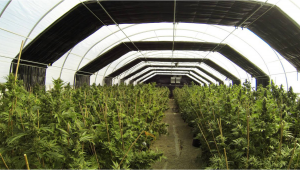
- 1. The lifecycle of a cannabis plant explained
- 2. What is light deprivation?
- 3. How to blackout cannabis plants
- 4. Light dep for 2 harvests per year
- 4. a. How to light dep step-by-step
- 4. b. Benefits of light dep
- 5. Maintaining the proper light cycle
- 6. Light deprivation and windowsills
- 7. Automating light deprivation
- 8. Autoflowering cannabis
- 9. Light deprivation technique - faqs
- 10. In conclusion
As you may know when growing cannabis seeds outdoors there’s a growing season, which means that you will have to start and end your growing cycle according to the weather. This season starts at the beginning of the spring equinox and ends in the final weeks of fall before winter starts. Some growers may want to have more harvests per year and this is when the light deprivation technique comes in. Light deprivation consists of covering your plants with a tarp to control the amount of light/darkness they get, allowing growers to grow more than once a year.
1. The Lifecycle of a Cannabis Plant Explained
Ok, so before we get into the belly of the beast, let's have a quick science lesson. If you have landed here then you are probably pretty well versed on how weed works, and if so feel free to skip ahead. But if you are just starting out on your cannabis cultivation journey, stick around as we discuss the full lifecycle of a cannabis plant. Cannabis plants go through stages of growth:
- The germination stage - This is the initial phase of growth, where a seed is forced to open up and send out the tap root. There are a bunch of ways to germinate a seed, but for home growers, we usually suggest the paper towel method.
- The seedling stage - this is the next stage of growth when the seedling starts to form leaves, stems, and eventually true roots. This is the most fragile stage of growth, so you need to be careful with the precious cargo.
- The vegetative stage - this is the long stretch between the seedling stage and flowering. It is during this stage of growth that the plant grows its size and structure. During this phase, you will need to keep your plant happy by providing an abundance of both water and nutrients to ensure optimal growth, but be careful not to overwater or feed.
- The flowering stage - when the plant reaches its full size and matures, it will start to flower. This is where all the magic happens, and the plant will start to produce those lovely buds.
Now, the vegetative and flowering growth phases are the most important to consider, and this is due to the fact that the timing of these stages is decided upon by the number of hours of light a plant is exposed to each day (with the exception of autoflowering strains, but we will get onto these a little later). You can actually force a plant to switch from vegetative growth to flower production by restricting the amount of light it receives (plants will stay in vegetative growth when they receive more than about 14 to 15 hours of light a day outdoors and will switch to flowering once the light is restricted to 12 hours or less per day), and this makes perfect sense when you think about how cannabis grows in the wild.
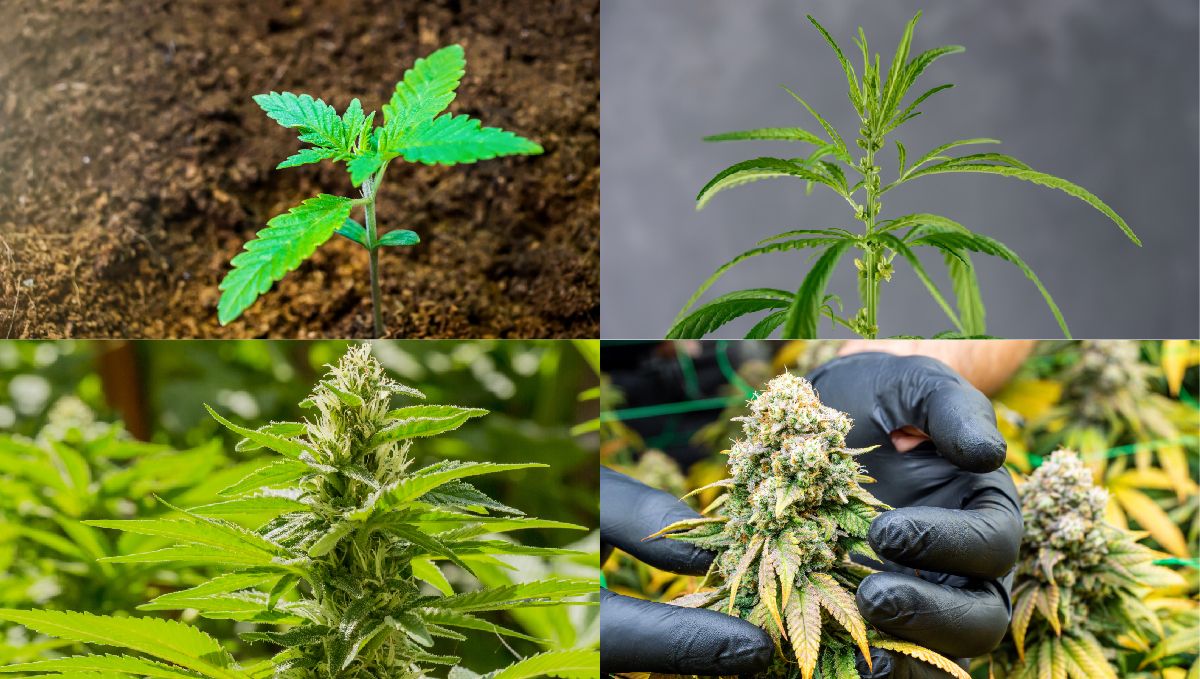
In nature, cannabis seeds germinate and turn into seedlings in the middle of spring, as the daylight hours are increasing. This gives them the time to go through the seedling stage and onto vegetative growth through the spring and summer, and once the light starts to wane they are big enough to produce an abundance of buds. So, how does this relate to light deprivation? Light deprivation is a method of growing cannabis outdoors where the plant’s light exposure is controlled to simulate summer coming to an end. This is done by covering the plants with a lightproof material during certain parts of each day, for 12 hours a day hours. This is done to shorten the daylight hours and trick the plants into thinking that summer is over and it is time to start flowering.
This method of forcing the plant into its flowering stage has become increasingly popular amongst outdoor growers as it offers a greater level of control. This is due to the fact that by controlling when the plant of flowers, growers can maximize their harvests and even squeeze two harvests in a single growing season. Alternatively, you can just grow autoflowering strains instead. Autoflowering strains? That's right. as the name suggests, autos will make the switch from vegetative growth to flower automatically, no matter the light cycle.
2. What is Light Deprivation?
Light deprivation is a technique used in agriculture and nowadays, in cannabis crops to control the amount of light and darkness your cannabis gets, simulating seasonal changes.
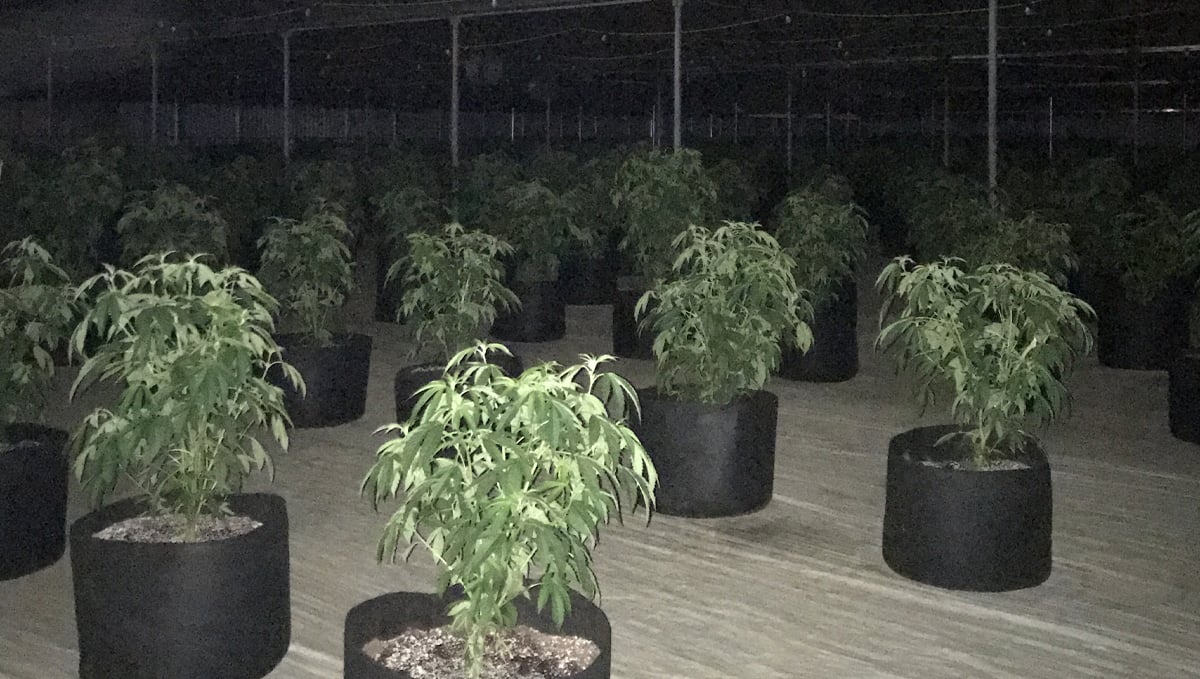
This allows growers to flower when they need to and reduce the time necessary for plants to fully mature, also making it possible to have multiple harvests per year like you would when growing indoors. To make this possible, growers often used automated greenhouses that can blackout their plants but there’s no need to buy expensive equipment, you can make your own blackout tent and enjoy the same benefits.
3. How To Blackout Cannabis Plants
Before even talking about how to use light deprivation, you need to have the appropriate structure and materials.
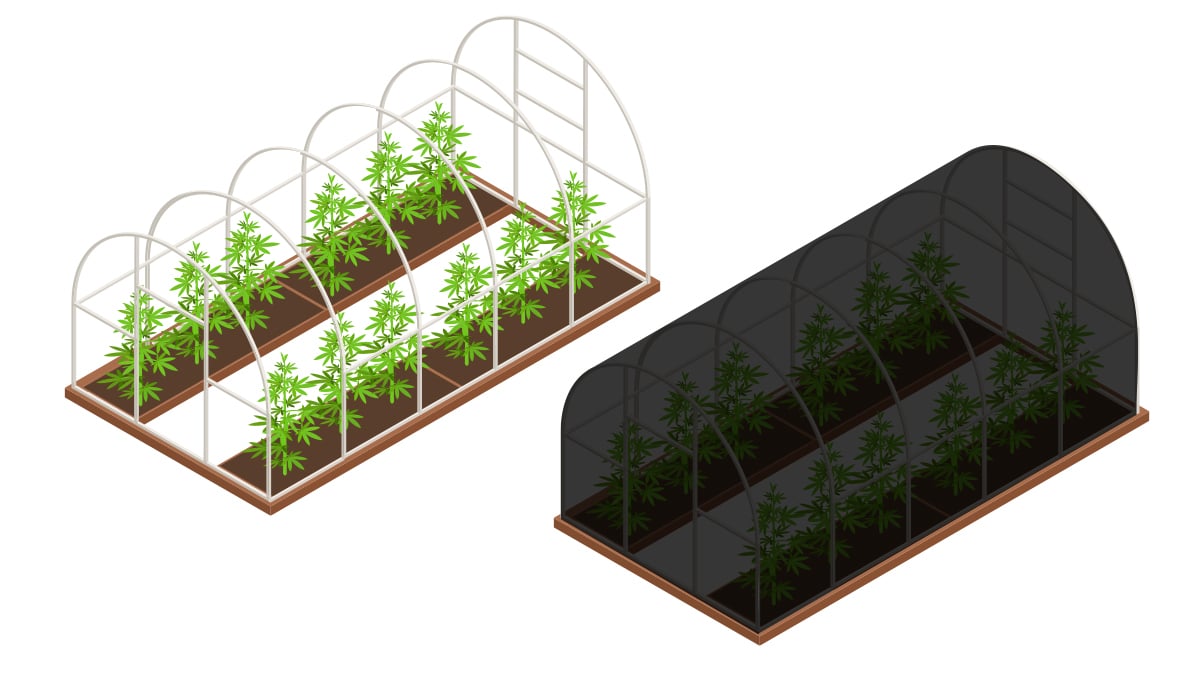
The structure used in light deprivation is basically a greenhouse that doesn’t allow sunlight to get in and is called a blackout tent, you can easily make this tent at home for cheap, just like a greenhouse, a blackout tent consists of a wooden or metal structure that can withstand the weight of a tarp. So to keep it simple you can just place four wood stakes in the ground, around your cannabis, and cover them with a tarp, but if you’re planning on using it for more than once, you can make a proper greenhouse structure and then cover it with a light-proof material.
4. Light Dep For 2 Harvests Per Year
Now that you have your blackout tent (or at least know how to build one) it’s time to learn how to do it properly. Have in mind that this technique is not hard at all but it will surely take a lot of work because you’ll manually have to remove and put the tarp on every day.
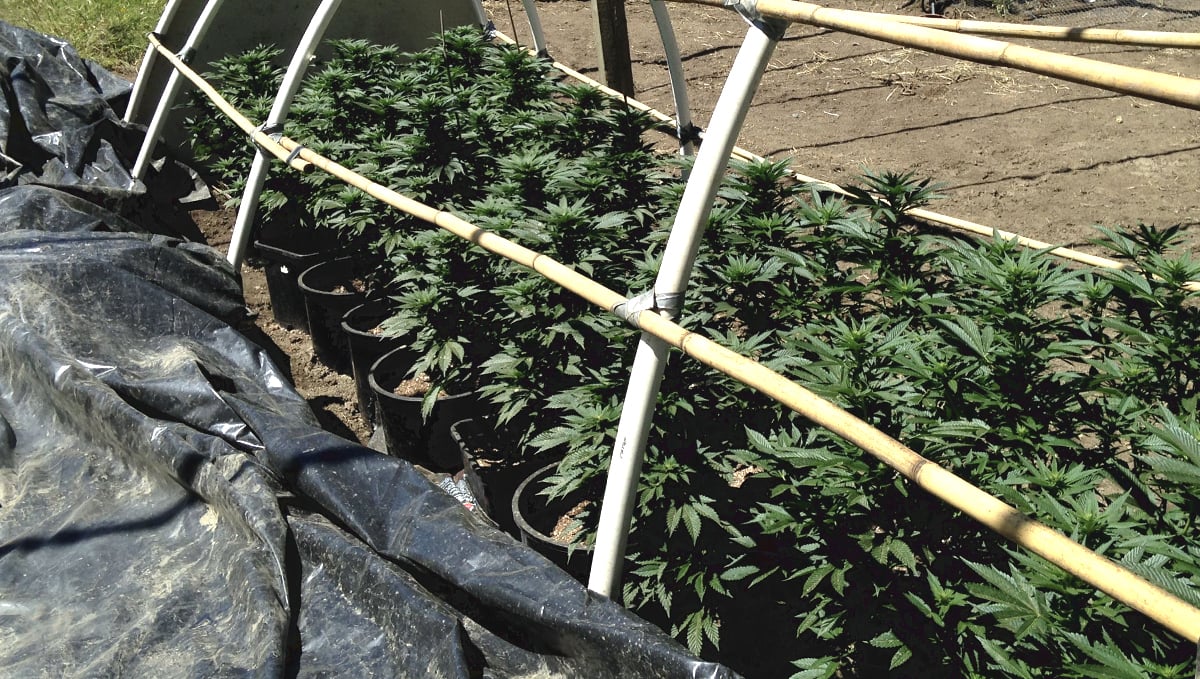
The idea behind this technique is to divide the outdoor season into two, having one harvest at the beginning until half of the outdoor season and having the next one from the mid-outdoor season until the end, that is starting Spring until mid-Summer and then mid-Summer until Fall. To be able to harvest at least 2 times per year, you will have to start and end your growing cycles according to the following:
| Start | End | |
|---|---|---|
| Harvest #1 | Spring | Mid-summer |
| Harvest #2 | Mid-summer | Autumn |
So, first of all, you will have to germinate and vegetate your cannabis for a couple of weeks before Spring, until they’ve reached a good size and immediately force them to flower outdoors with this technique. Your second crop should be started as soon as you moved the first one outdoors so they’ll be ready to flower when you have harvested the first plants and because they’ll be outdoors in mid-Summer, they’ll start flowering automatically without the need to use light deprivation.
How to light dep step-by-step
Step 1
Start your cannabis indoors under cheap CFLs and put them outdoors in Spring, when they don’t risk dying because of the cold.
Step 2
Use the blackout tent to perform light dep and ensure your plants are getting 12hs of darkness every day, this will guarantee your cannabis start flowering as soon as possible.
Step 3
As soon as you place your first batch outside, start the second one indoors under CFLs, just like you did with the first batch.
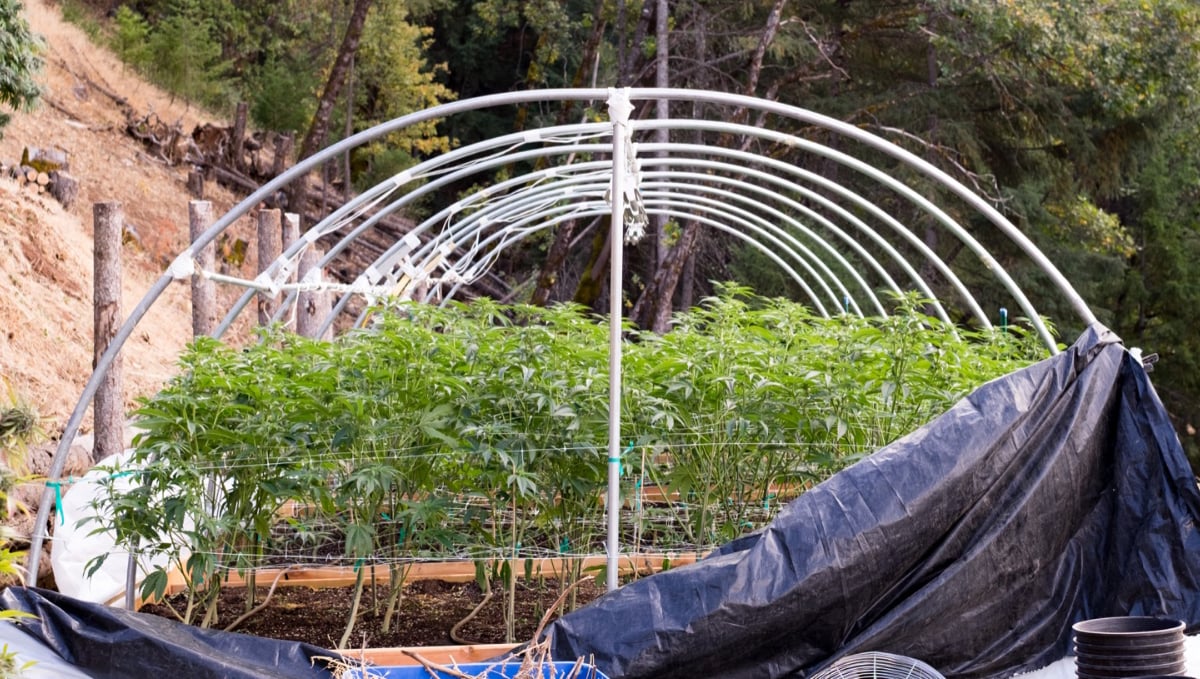
Step 4
Harvest your first batch around mid-summer, your cannabis should be completely mature by now.
Step 5
Put the second batch outside and let them flower naturally, by now the light cycle should be the appropriate one for cannabis to flower so you won’t need to use the blackout tent unless it gets too cold or humid and you want to protect your plants from the harsh conditions. If you’ve done everything correctly, your cannabis should be beautifully done and ready for harvest before winter.
Benefits of light dep
This technique not only allows you to have more cycles but also brings a couple of benefits to home growers such as:
- Better bud quality
By splitting one big harvest into two smaller harvests a year, the plants will grow smaller and will need less time to ripen, resulting in an overall better quality, and also, due to the shorter cycle, it’s less likely to suffer from mold or bugs.
- Better yields
Even though each individual harvest will be smaller when compared to having just one big cycle, the overall yields will be higher because you will have two cycles instead of one.
- Don’t have to wait as much
Obviously, when you are growing just once a year you have to wait a lot to be able to smoke your flowers, this technique makes it possible to harvest two times a year so you won’t run out of weed!
5. Maintaining the proper light cycle
The most important aspect of the light dep technique is that plants need to get 12hs of uninterrupted darkness at a time, this means you will have to cover your plants or hide them from sunlight every time. To do this, you will have to provide extra dark hours either in the evening or in the morning, that’s up to you.
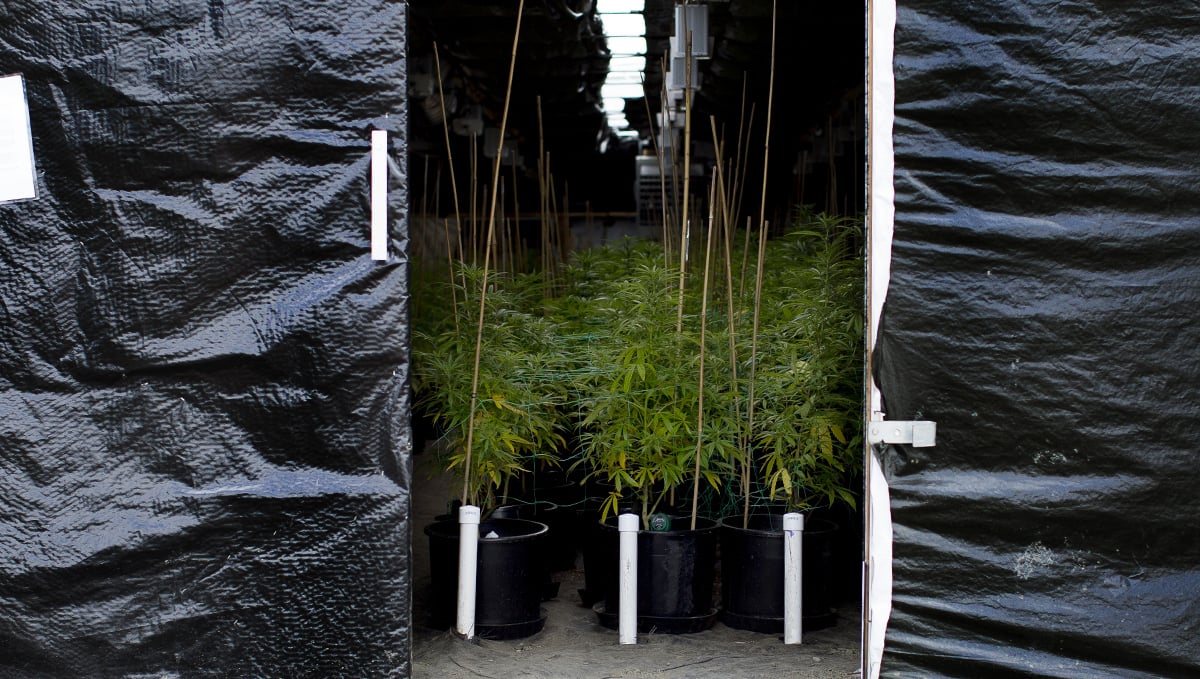
If you are busy all day long and prefer covering your plants after work, you will have to cover your plants in the evening and uncover them again before you go to bed, this ensures your plant gets 12hs of uninterrupted darkness. For example, if the sun rises at 7 am you have to cover your plants 12hs before sunrise, so that would be around 7 pm. If you prefer having to do this early in the morning, you will have to cover your plants before sunrise.
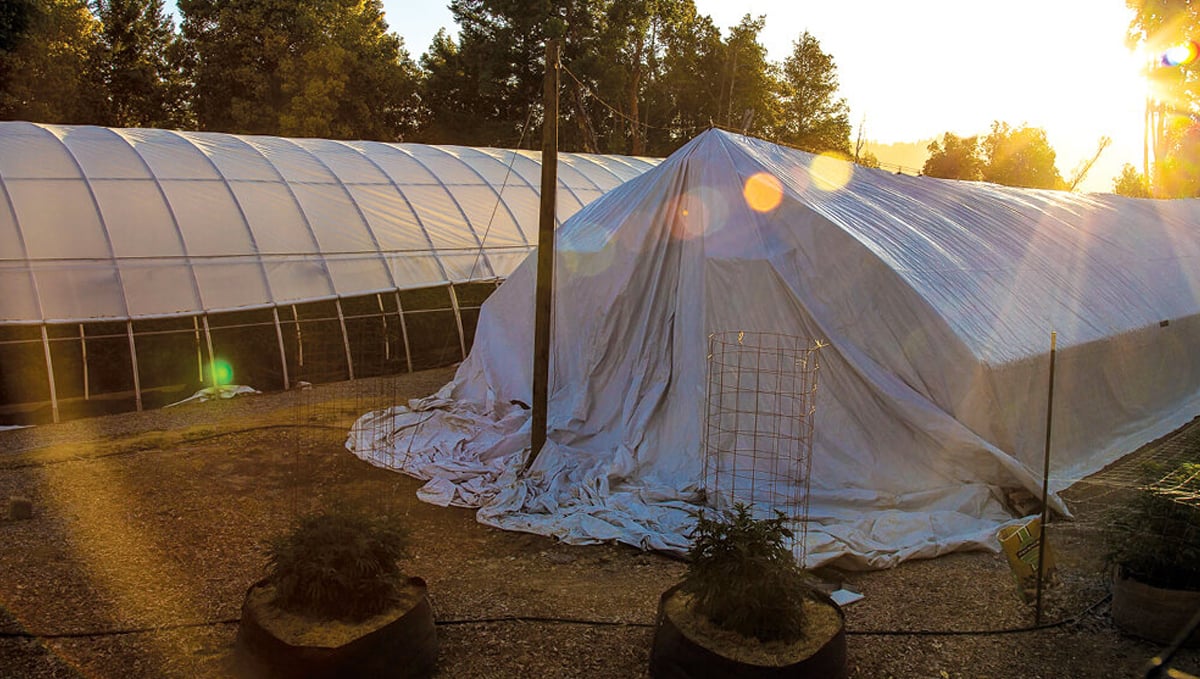
So, for example, if the sun goes down at around 9 pm, you should cover your plants before sunrise and uncover your plants around 9 am, this way totaling 12hs of light and 12hs of darkness, which is the cycle in which photoperiodic cannabis flowers. Now, if you want to grow cannabis outdoors but you don’t want to have a lot of work, you can just grow autoflowering genetics.
6. Light Deprivation and Windowsills
The light deprivation technique does not have to be complicated at all. Some growers do not have a grow tent or grow room, which can make it hard to perform this technique but the light deprivation technique works fairly well if your plants are getting sunlight through the window. A windowsill can be a great way to perform this technique as all you need is curtains or blinds. So after your plants receive the amount of light you want them to get, all you have to do is close the curtains or blinds, there’s no need to move your plants around, as long as it’s completely dark you will be able to provide the light cycle you need.
7. Automating Light Deprivation
Now, when talking about light deprivation, consistency is key as failing to cover and uncover your plants daily will cause them to hermie in most cases, but it can be tedious, especially if you’re doing it manually. Luckily, in these cases, there’s an alternative. If you’re using the light deprivation technique to provide a certain light cycle, you can automate your setup. So for example, if you’re growing on a windowsill, you could automate the blinds with a timer and the blinds will open and close on time. Remember this is just an example and could be applied to any setup, just make sure to put everything into perspective to see if it’s worth opening and closing the windows or flaps daily or investing in a new one.
8. Autoflowering cannabis
With autoflowers you should not worry about this as they don’t depend on the light cycle to trigger flowering. The light deprivation technique will not be needed when growing autoflowers as they will flower under 12/12, 13/11, 18/6, 20/4, and even 24/0 light cycle. But the opposite could be of great help, if your plants are not getting enough light you can supplement sunlight with any type of grow light to provide the number of light hours you prefer and ultimately get better results.
As you may have figured by now, this method can be exhausting if you don’t have a way to automate the process but luckily nowadays you can easily find autoflowering cannabis in most seedbanks. Growing autoflowers instead of photoperiodic cannabis allows you to have a lot of plants without having to worry about light dep, autoflowers don’t rely on a certain cycle to start flowering so if you want to have multiple harvests all year long, you may want to stick to autos. If you’re an outdoor grower and have never grown autos before, we recommend strains such as our Wedding Cheesecake Auto, this strain grows up to 130cm and it’s ideal for outdoor growers who want to get impressive yields all year long.
9. Light Deprivation Technique - FAQs
Can You Add Light to Your Outdoor Crop to Force the Plants to Continue Vegetative Growth?
You sure can! Extending the photoperiod of your outdoor crop will force the plants to stay in a vegetative growth stage for longer, allowing for larger plants and larger harvests. You do have to be pretty careful though, as the last thing you want is to flower your plants in colder than ideal temps. You'll want to make sure it's still sunny, warm, and dry for the full flowering period before you extend the photoperiod of your outdoor crop.
How Long do Cannabis Plants Take to Flower?
That is totally strain dependent. Some strains can take as little as six weeks to fully flower, whereas others may take more than double that time. Every reputable seed back should provide you with all the data you need to know when it comes to flowering time.
Should Light Deprivation be Used With Other Training Techniques?
Definitely. Stress training is a great way to guarantee a bigger harvest with higher potency, and so every plant you grow should be subjected to it. Light deprivation makes that even easier, as you have full control over when the plants will start flowering. By combining certain training methods with light deprivation, you can maximize yields even further and ensure the highest quality cannabis possible.
What Are the Best Training Methods to Use With Light Deprivation?
That really depends on the strain, and how much work you want to put in. It is important to understand that if you are going to go down the HST (High-Stress Training) route, these techniques must be implemented before you switch the crop to flower production and that these techniques will stunt the growth of the plant for a few days. The best training techniques to use with light deprivation are -
- Topping - this is when you remove the crown of the plant just above the node, which results in the two branches becoming the main shoots
- Super cropping - this is when you manually bend the branches of the plant to make them more rigid in the long run, increasing bud production
- ScrOG - this is when you train the uppermost branches of the plant to grow horizontally through a net or screen, resulting in a higher yield by increasing the light penetration for most of the flowering sites, and increasing the canopy air exchange.
10. In Conclusion
The light dep technique requires a lot of work, even though it's cheaper than investing in an indoor grow setup, you will have to cover and uncover your plants every day and if something happens and you're not home when you have to do it, you may end up ruining your harvest so autoflowers are a great way to avoid this and save you from lots of work. If you have grown with the light deprivation technique before, share your experience with fellow growers, leave a comment in the comment section below!









Comments